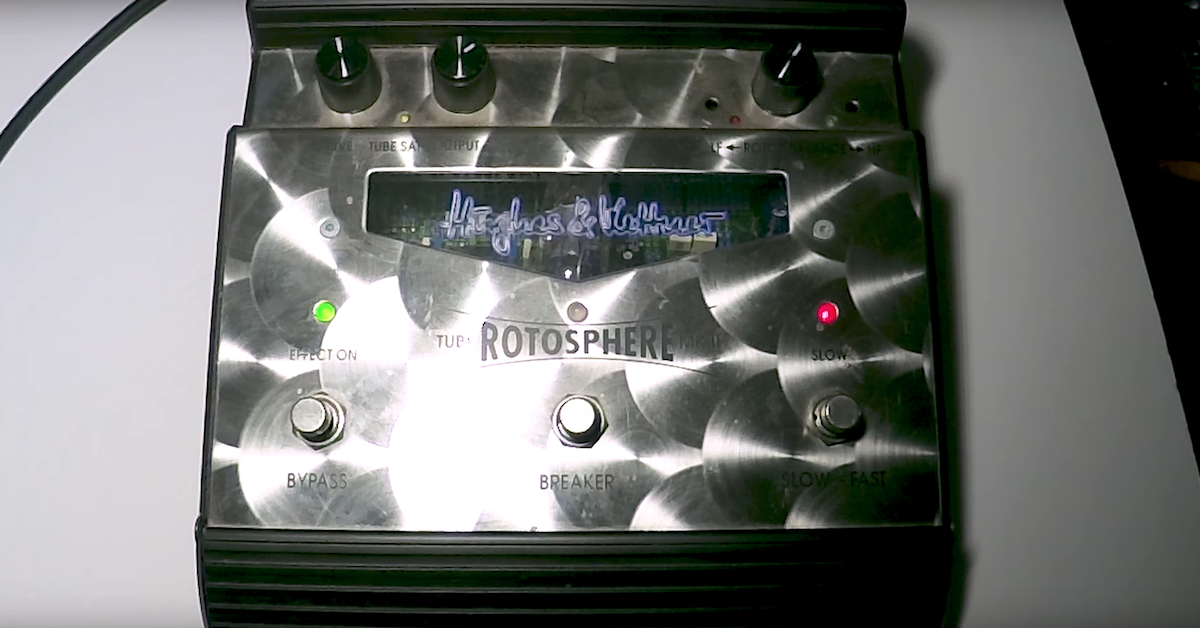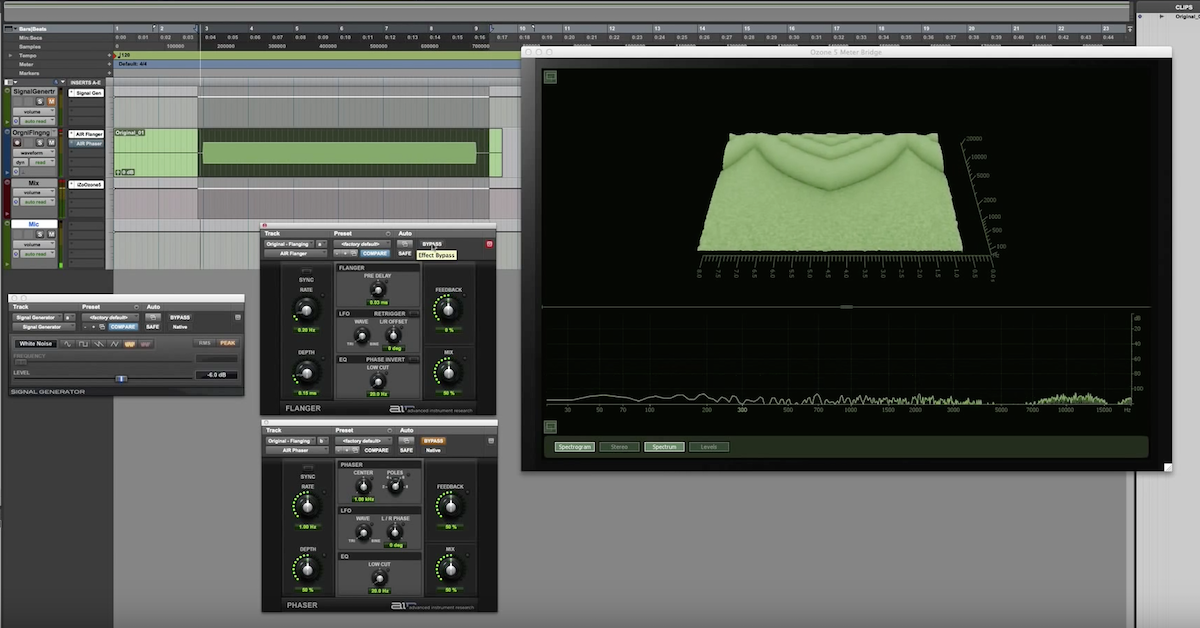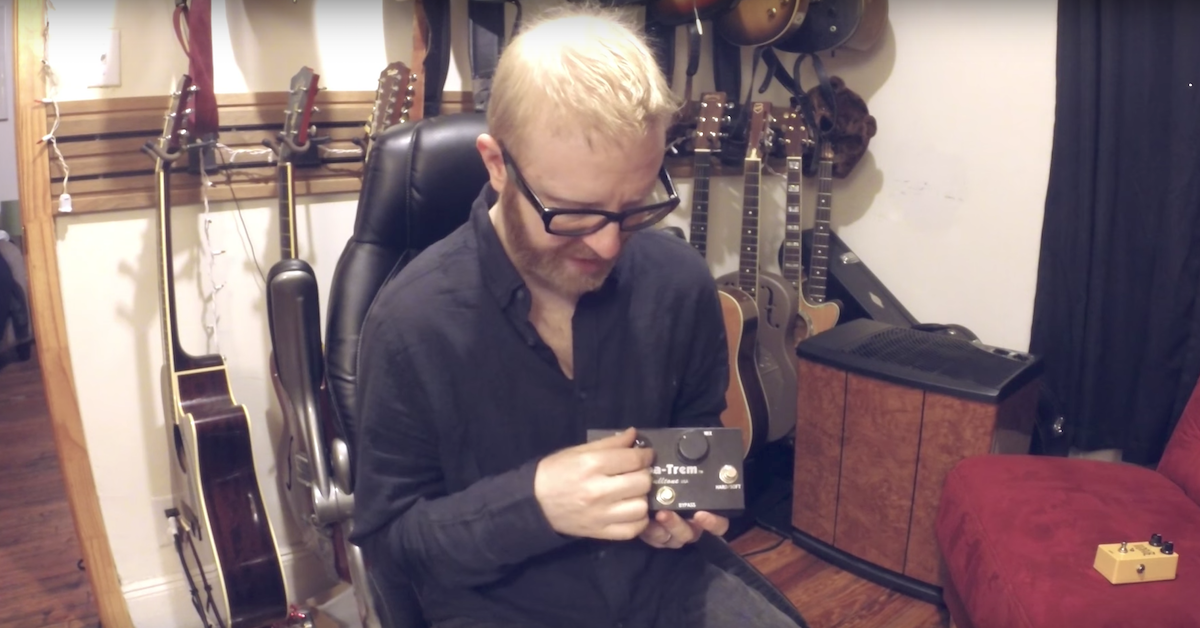4 Basic Types of Modulation Effects
In this video, I’m going to show you how to setup four different kinds of modulation effects. This one will include a standard chorus sound, flanging, phasing, and tremolo.
First, I’ll play you my song, and then I’ll show you the specific situations where I’m going to use the effects.
[mix]
So for this kind of song, I’m just going to be using these modulation effects to add a little bit extra variety. I’m not trying to do anything too dramatic, just give it a little bit of extra flavor.
So to begin with, I’m going to show you a chorus effect on the bass guitar. Let me bring this one up a little bit…
Insert just a standard, stock chorus effect here from Pro Tools. AIR Chorus.
Pretty straight forward plug-in to use. We’re going to be listening for the sound — I’m manipulating the rate and the depth. With the bass, adding a little bit of chorus is pretty common to do. Helps thicken it up a little bit.
But I don’t want it to be too dramatic, so I’m going to try and stick with a pretty slow rate. I’ll play it back and focus on the bass here.
[bass]
I think that’s great. I’ll play it now in the context of the mix.
[mix]
Next, why don’t we move on and try some other effects?
How about the flanging effect? This one I’m going to add very subtly to the slide guitar part. So I’ll pull it up over here, and I’m going to look for an AIR Flanger.
In this case, again, I’ll solo out the instrument, and listen back to it then afterwards in context.
So here’s the slide guitar part.
[slide guitar]
Alright. So the depth control here is going to tell me basically the intensity of what’s going on.
Why don’t we listen back to it now in the context of the mix, and I’ll try and dial in the depth so that it fits better with the song?
[mix]
Next, let’s have a look at the phasing and tremolo effect.
I’m going to add them over here to these electric guitar parts. Let’s listen to them without the effects first.
[guitar]
On the one on the right, this is where I’m going to add in the phaser. I’ll find it under here. AIR Phaser.
Again, listen back. This time, you’ll see that in all of these effects, I’m basically going to be manipulating the depth and the rate. That’s going to be your main controls for how intense you want it to be.
I’m also going to back off and just use four poles in this case. The more poles you have, the more it’s going to cause different amounts of notches across the spectrum.
So let’s listen to this one.
[guitar with phaser]
How about I pan it to the center?
[guitar with phaser]
Alright. Nothing too dramatic. Let’s go over here and listen to the left part, which is very similar.
In this case though, instead of the phaser, I’m going to add tremolo.
[guitar with tremolo]
With many of these modulation effects, one thing you can experiment with is tempo synchronized effect, so that the rate of it matches up with the tempo of your song.
Here, I’m going to set the rate to be eighth notes.
[guitar with tremolo]
In this case, I actually like the intensity to be pretty high.
Alright, let’s listen back to these parts together.
[guitars]
Alright, I think they work pretty well together.
Let’s listen to all these parts now in the context of the full mix.
[mix]
So there you have it. Four basic kinds of modulation effects. Chorus, flanging, phasing, and tremolo.
These are effects if done in a tasteful way, can take a good mix, and turn it into a great mix.






